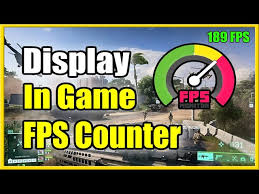Ever felt like your games are a little sluggish, or maybe the action seems jerky? That’s where FPS comes in. FPS, or frames per second, tells you how many images your computer or gaming device can display on your screen in one second. The higher the FPS, the smoother and more responsive the gameplay will feel. But how do you actually see that number on your screen? Buckle up, because we’re about to dive into the world of FPS testing!
Why Should You Care About FPS?
There are a couple of reasons why keeping an eye on your FPS is a good idea. Firstly, it helps you understand how well your system is handling the game you’re playing. If you’re experiencing lag or stuttering, a low FPS could be the culprit. Secondly, knowing your FPS can help you tweak your graphics settings to find the perfect balance between visual fidelity and performance.
Here’s a quick breakdown of what different FPS ranges generally mean:
Below 30 FPS: This is considered unplayable for most games. The action will feel very jerky and unresponsive.
30-60 FPS: This is the standard for most console games and many PC games. It provides a smooth and enjoyable gameplay experience.
60+ FPS: This is ideal for fast-paced games like shooters or competitive online games. It provides a very smooth and responsive experience.
120+ FPS: This is the realm of high-end gaming PCs and monitors with high refresh rates. It offers an incredibly smooth and responsive experience, but the benefits become less noticeable as the FPS climbs even higher.
Different Types of FPS Tests
A FPS test can be performed in two ways:
In-game FPS counters: Many games have built-in FPS counters that you can enable in the settings menu. This is the easiest and most convenient way to check your FPS while you’re playing.
Third-party FPS overlay software: These are programs that run in the background and display your FPS on top of whatever application you’re using. These can be useful if the game you’re playing doesn’t have a built-in FPS counter, or if you want to monitor your FPS for other applications besides games.
Taking the FPS Test: A Step-by-Step Guide
Now that you know why FPS matters and the different ways to check it, let’s get down to the nitty-gritty! Here’s how to use an in-game FPS counter and third-party overlay software:
Using an In-game FPS Counter
Fire Up Your Game: Launch the game you want to test the FPS for.
Head to Settings: Locate the game’s settings menu. This is usually accessed by pressing the Escape key (Esc) or by clicking on an options icon in the main menu.
Seek the FPS Counter: Navigate through the settings menu and look for an option related to displaying FPS. It might be under “Graphics,” “Video,” or a similar category.
Enable the Counter: Once you find the FPS counter option, activate it. The wording might be something like “Enable FPS Display” or “Show FPS Counter.”
Back to the Action!: Exit the settings menu and head back into the game. You should now see the FPS displayed somewhere on your screen. The location will vary depending on the game.
Using Third-party FPS Overlay Software
Download and Install: There are many free and paid FPS overlay programs available. Popular choices include MSI Afterburner, FRAPS, and Nvidia GeForce Experience (for Nvidia graphics cards). Choose one that suits your needs and download it from the official website.
Installation is usually straightforward: Follow the on-screen instructions to install the software.
Configure the Overlay: Once installed, open the FPS overlay software and look for settings related to the FPS display. You can usually customize the location and appearance of the FPS counter on your screen.
Run Your Program: Launch the game or application you want to test the FPS for. The FPS overlay should appear on top of it, displaying the current frame rate.
Conclusion
By following these steps, you can easily check your FPS and get a sense of how well your system is handling your games. Remember, the ideal FPS depends on the type of game you’re playing and your personal preferences. Experiment with different graphics settings to find the sweet spot between performance and visual quality. Now go forth and conquer those games with smooth, responsive gameplay!
